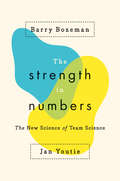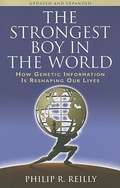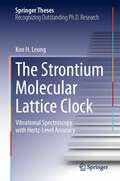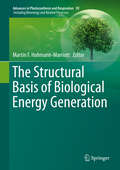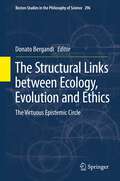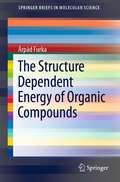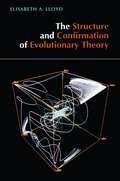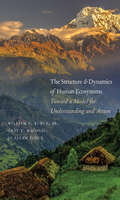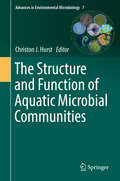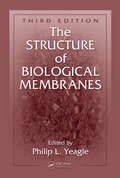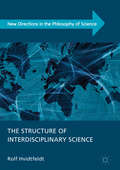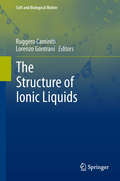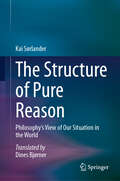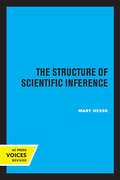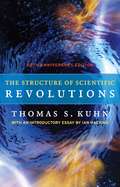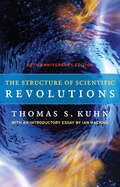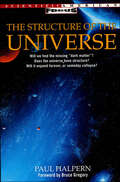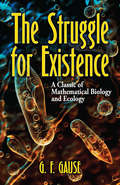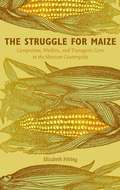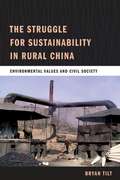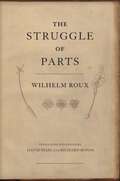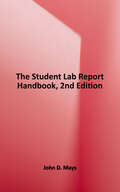- Table View
- List View
The Strength in Numbers: The New Science of Team Science
by Barry Bozeman Jan YoutieOnce upon a time, it was the lone scientist who achieved brilliant breakthroughs. No longer. Today, science is done in teams of as many as hundreds of researchers who may be scattered across continents and represent a range of hierarchies. These collaborations can be powerful, but they demand new ways of thinking about scientific research. When three hundred people make a discovery, who gets credit? How can all collaborators’ concerns be adequately addressed? Why do certain STEM collaborations succeed while others fail?Focusing on the nascent science of team science,The Strength in Numbers synthesizes the results of the most far-reaching study to date on collaboration among university scientists to provide answers to such questions. Drawing on a national survey with responses from researchers at more than one hundred universities, anonymous web posts, archival data, and extensive interviews with active scientists and engineers in over a dozen STEM disciplines, Barry Bozeman and Jan Youtie set out a framework to characterize different types of collaboration and their likely outcomes. They also develop a model to define research effectiveness, which assesses factors internal and external to collaborations. They advance what they have found to be the gold standard of science collaborations: consultative collaboration management. This strategy—which codifies methods of consulting all team members on a study’s key points and incorporates their preferences and values—empowers managers of STEM collaborations to optimize the likelihood of their effectiveness.The Strength in Numbers is a milestone in the science of team science and an indispensable guide for scientists interested in maximizing collaborative success.
The Strongest Boy in the World: How Genetic Information Is Reshaping Our Lives (Updated and Expanded Edition)
by Philip R. ReillyThis updated edition includes an essay about the fast-moving and controversial field of personal genomics. In the essay, Reilly explains how new, cutting-edge technologies have facilitated the rapid discovery of genetic markers associated with ailments such as macular degeneration, heart disease, and schizophrenia. He describes how the same powerful technologies can be used to interpret the DNA sequence of anyone in the world--who can afford it. But how valuable are the data obtained from these tests? Will "personalized medicine" really improve our health and well-being? And at what cost? Reilly's new essay is a worthy addition to his entertaining and informative collection of stories on topics such as genetics and the future of sports, the evolutionary origins of humans, the mysteries of genetic diseases, the similarities between dogs and people, the impact of genetic engineering on what we eat, and the ethical dimensions of stem cell research.
The Strontium Molecular Lattice Clock: Vibrational Spectroscopy with Hertz-Level Accuracy (Springer Theses)
by Kon H. LeungThis thesis describes how the rich internal degrees of freedom of molecules can be exploited to construct the first “clock” based on ultracold molecules, rather than atoms. By holding the molecules in an optical lattice trap, the vibrational clock is engineered to have a high oscillation quality factor, facilitating the full characterization of frequency shifts affecting the clock at the hertz level. The prototypical vibrational molecular clock is shown to have a systematic fractional uncertainty at the 14th decimal place, matching the performance of the earliest optical atomic lattice clocks. As part of this effort, deeply bound strontium dimers are coherently created, and ultracold collisions of these Van der Waals molecules are studied for the first time, revealing inelastic losses at the universal rate. The thesis reports one of the most accurate measurements of a molecule’s vibrational transition frequency to date. The molecular clock lays the groundwork for explorations into terahertz metrology, quantum chemistry, and fundamental interactions at atomic length scales.
The Structural Basis of Biological Energy Generation
by Martin F. Hohmann-MarriottThe fascinating machinery that life uses to harness energy is the focus of this volume of the Advances in Photosynthesis and Respiration series. Experts in the field communicate their insights into the mechanisms that govern biological energy conversion from the atomic scale to the physiological integration within organisms. By leveraging the power of current structural techniques the authors reveal the inner workings of life.
The Structural Design of Language
by Thomas S. Stroik Michael T. PutnamAlthough there have been numerous investigations of biolinguistics within the Minimalist Program over the last ten years, many of which appeal to the importance of Turing's Thesis (that the structural design of systems must obey physical and mathematical laws), these studies have by and large ignored the question of the structural design of language. They have paid significant attention to identifying the components of language - settling on a lexicon, a computational system, a sensorimotor performance system and a conceptual-intentional performance system; however, they have not examined how these components must be inter-structured to meet thresholds of simplicity, generality, naturalness and beauty, as well as of biological and conceptual necessity. In this book, Stroik and Putnam take on Turing's challenge. They argue that the narrow syntax - the lexicon, the Numeration, and the computational system - must reside, for reasons of conceptual necessity, within the performance systems. As simple as this novel design is, it provides, as Stroik and Putnam demonstrate, radical new insights into what the human language faculty is, how language emerged in the species, and how language is acquired by children.
The Structural Links between Ecology, Evolution and Ethics
by Donato BergandiEvolutionary biology, ecology and ethics: at first glance, three different objects of research, three different worldviews and three different scientific communities. In reality, there are both structural and historical links between these disciplines. First, some topics are obviously common across the board. Second, the emerging need for environmental policy management has gradually but radically changed the relationship between these disciplines. Over the last decades in particular, there has emerged a need for an interconnecting meta-paradigm that integrates more strictly evolutionary studies, biodiversity studies and the ethical frameworks that are most appropriate for allowing a lasting co-evolution between natural and social systems. Today such a need is more than a mere luxury, it is an epistemological and practical necessity.
The Structure Dependent Energy of Organic Compounds (SpringerBriefs in Molecular Science)
by Árpád FurkaThis brief introduces readers to an alternative thermochemical reference system that makes it possible to use the heats of formation of organic compounds to deduce the energies that depend entirely on their structures, and which provides calculated values for most of the characteristic structures appearing in organic molecules. These structure-dependent energies are provided e.g. for selected compounds of normal and cyclic alkanes, open chain and cyclic olefins (including conjugated polyenes), alkynes, aromatic hydrocarbons and their substituted derivatives. The oxygen, sulfur and nitrogen derivatives of the above-mentioned compounds are also represented with calculated structure-dependent energies including alcohols, ethers, aldehydes and ketones, carboxylic acids, thiols, sulfides, amines, amides, heterocyclic compounds and others. Most organic reactions can be interpreted as the disappearance of certain structures and formation of others. If the structure-dependent energies are known, it can be shown how the disappearing and the newly formed structures contribute to the heat of reactions and to the driving forces. As experienced by the author, who pioneered the concept, structure dependent energies can help teachers to make organic chemistry more accessible for their students. Accordingly, the brief offers a valuable resource for all those who teach organic chemistry at universities, and for those who are learning it.
The Structure and Confirmation of Evolutionary Theory (Contributions In Philosophy Ser. #No. 37)
by Elisabeth A. LloydTraditionally a scientific theory is viewed as based on universal laws of nature that serve as axioms for logical deduction. In analyzing the logical structure of evolutionary biology, Elisabeth Lloyd argues that the semantic account is more appropriate and powerful. This book will be of interest to biologists and philosophers alike.
The Structure and Dynamics of Human Ecosystems: Toward a Model for Understanding and Action
by William R. Burch Gary E. Machlis Jo Ellen ForceA landmark book that strives to provide both grand theory and practical application, innovatively describing the structure and dynamics of human ecosystems As the world faces ever more complex and demanding environmental and social challenges, the need for interdisciplinary models and practical guidance becomes acute. The Human Ecosystem Model described in this landmark book provides an innovative response. Broad in scope, detailed in method, at once theoretical and applied, this grand study offers an in-depth understanding of human ecosystems and tools for action. The authors draw from Goethe’s Faust, classic anthropology and sociology studies, contemporary ecosystem ecology, Buddhist ethics, and more to create a paradigm-shifting model and a major advance in interdisciplinary ecology.
The Structure and Function of Aquatic Microbial Communities (Advances in Environmental Microbiology #7)
by Christon J. HurstThis book discusses how aquatic microbial communities develop interactive metabolic coordination both within and between species to optimize their energetics. It explains that microbial community structuration often includes functional stratification among a multitude of organisms that variously exist either suspended in the water, lodged in sediments, or bound to one another as biofilms on solid surfaces. The authors describe techniques that can be used for preparing and distributing microbiologically safe drinking water, which presents the challenge of successfully removing the pathogenic members of the aquatic microbial community and then safely delivering that water to consumers. Drinking water distribution systems have their own microbial ecology, which we must both understand and control in order to maintain the safety of the water supply. Since studying aquatic microorganisms often entails identifying them, the book also discusses techniques for successfully isolating and cultivating bacteria. As such, it appeals to microbiologists, microbial ecologists and water quality scientists.
The Structure of Biological Membranes
by Philip L. YeagleBiological membranes provide the fundamental structure of cells and viruses. Because much of what happens in a cell or in a virus occurs on, in, or across biological membranes, the study of membranes has rapidly permeated the fields of biology, pharmaceutical chemistry, and materials science. The Structure of Biological Membranes, Third Edition pro
The Structure of Evolutionary Theory
by Stephen Jay GouldThe world's most revered and eloquent interpreter of evolutionary ideas offers here a work of explanatory force unprecedented in our time--a landmark publication, both for its historical sweep and for its scientific vision. With characteristic attention to detail, Stephen Jay Gould first describes the content and discusses the history and origins of the three core commitments of classical Darwinism: that natural selection works on organisms, not genes or species; that it is almost exclusively the mechanism of adaptive evolutionary change; and that these changes are incremental, not drastic. Next, he examines the three critiques that currently challenge this classic Darwinian edifice: that selection operates on multiple levels, from the gene to the group; that evolution proceeds by a variety of mechanisms, not just natural selection; and that causes operating at broader scales, including catastrophes, have figured prominently in the course of evolution. Then, in a stunning tour de force that will likely stimulate discussion and debate for decades, Gould proposes his own system for integrating these classical commitments and contemporary critiques into a new structure of evolutionary thought. In 2001 the Library of Congress named Stephen Jay Gould one of America's eighty-three Living Legends--people who embody the "quintessentially American ideal of individual creativity, conviction, dedication, and exuberance." Each of these qualities finds full expression in this peerless work, the likes of which the scientific world has not seen--and may not see again--for well over a century.
The Structure of Interdisciplinary Science (New Directions in the Philosophy of Science)
by Rolf HvidtfeldtThis book presents a novel approach to the analysis of interdisciplinary science based on the contemporary philosophical literature on scientific representation. The basic motivation for developing this approach is that epistemic issues are insufficiently dealt with in the existing literature on interdisciplinarity. This means that when interdisciplinary science is praised (as it often is), it is far from clear to what extent this praise is merited – at least if one cares about various more or less standardised measures of scientific quality. To develop a more adequate way of capturing what is going on in interdisciplinary science, the author draws inspiration from the rich philosophical literature on modelling, idealisation, perspectivism, and scientific pluralism. The discussion hereof reveals a number of critical pitfalls related to transferring mathematical and conceptual tools between scientific contexts, which should be relevant and interesting for anyone actively engaged in funding, evaluating, or carrying out interdisciplinary science.
The Structure of Ionic Liquids
by Ruggero Caminiti Lorenzo GontraniThis volume describes the most recent findings on the structure of ILs interpreted through cutting-edge experimental and theoretical methods. Research in the field of ionic liquids (ILs) keeps a fast and steady pace. Since these new-generation molten salts first appeared in the chemistry and physics landscape, a large number of new compounds has been synthesized. Most of them display unexpected behaviour and possess stunning properties. The coverage in this book ranges from the mesoscopic structure of ILs to their interaction with proteins. The reader will learn how diffraction techniques (small and large angle X-Ray and neutron scattering, powder methods), X-Ray absorption spectroscopies (EXAFS/XANES), optical methods (IR, RAMAN), NMR and calorimetric methods can help the study of ILs, both as neat liquids and in mixtures with other compounds. It will enable the reader to choose the best method to suit their experimental needs. A detailed survey of theoretical methods, both quantum-chemical and classical, and of their predictive power will accompany the exposition of experimental ones. This book is a must read for postgraduate students, for post-docs, and for researchers who are interested in understanding the structural properties of ILs.
The Structure of Pure Reason: Philosophy’s View of Our Situation in the World
by Kai SørlanderThis book explains how the idea of there being no ultimate, universal truth is in itself a contradictory philosophical position. Philosophers throughout history have tried to answer the question of what the deepest truth is about the world and our situation in it. They have put forward various philosophical systems, but none have won universal acceptance; and it is widely believed today that the time of philosophical systems is over. This book shows very concretely how to proceed in order to uncover the system of mutually defined basic concepts, which must be presupposed for any possible description of reality and any possible description of our situation as persons. Thus, in reigniting the discussion on philosophical systems, the author adds to the historical and contemporary discussions of Kant’s structure of pure reason.
The Structure of Scientific Inference
by Mary HesseThis title is part of UC Press's Voices Revived program, which commemorates University of California Press’s mission to seek out and cultivate the brightest minds and give them voice, reach, and impact. Drawing on a backlist dating to 1893, Voices Revived makes high-quality, peer-reviewed scholarship accessible once again using print-on-demand technology. This title was originally published in 1974.
The Structure of Scientific Revolutions
by Thomas S. KuhnA good book may have the power to change the way we see the world, but a great book actually becomes part of our daily consciousness, pervading our thinking to the point that we take it for granted, and we forget how provocative and challenging its ideas once were—and still are. The Structure of Scientific Revolutions is that kind of book. When it was first published in 1962, it was a landmark event in the history and philosophy of science. Fifty years later, it still has many lessons to teach.<P><P> With The Structure of Scientific Revolutions, Kuhn challenged long-standing linear notions of scientific progress, arguing that transformative ideas don’t arise from the day-to-day, gradual process of experimentation and data accumulation but that the revolutions in science, those breakthrough moments that disrupt accepted thinking and offer unanticipated ideas, occur outside of “normal science,” as he called it. Though Kuhn was writing when physics ruled the sciences, his ideas on how scientific revolutions bring order to the anomalies that amass over time in research experiments are still instructive in our biotech age.<P> Chosen for Mark Zuckerberg's "A Year of Books"
The Structure of Scientific Revolutions: 50th Anniversary Edition
by Thomas S. KuhnA good book may have the power to change the way we see the world, but a great book actually becomes part of our daily consciousness, pervading our thinking to the point that we take it for granted, and we forget how provocative and challenging its ideas once were—and still are. The Structure of Scientific Revolutions is that kind of book. When it was first published in 1962, it was a landmark event in the history and philosophy of science. Fifty years later, it still has many lessons to teach. With The Structure of Scientific Revolutions, Kuhn challenged long-standing linear notions of scientific progress, arguing that transformative ideas don’t arise from the day-to-day, gradual process of experimentation and data accumulation but that the revolutions in science, those breakthrough moments that disrupt accepted thinking and offer unanticipated ideas, occur outside of “normal science,” as he called it. Though Kuhn was writing when physics ruled the sciences, his ideas on how scientific revolutions bring order to the anomalies that amass over time in research experiments are still instructive in our biotech age. This new edition of Kuhn’s essential work in the history of science includes an insightful introduction by Ian Hacking, which clarifies terms popularized by Kuhn, including paradigm and incommensurability, and applies Kuhn’s ideas to the science of today. Usefully keyed to the separate sections of the book, Hacking’s introduction provides important background information as well as a contemporary context. Newly designed, with an expanded index, this edition will be eagerly welcomed by the next generation of readers seeking to understand the history of our perspectives on science.
The Structure of Spoken Language
by Philippe MartinUsing an innovative approach, this book focuses on a widely debated area of phonetics and phonology: intonation, and specifically its relation to metrics, its interface with syntax, and whether it can be attributed more to phonetics or phonology, or equally to both. Drawing on data from six Romance languages (French, Italian, Spanish, Portuguese, Catalan and Romanian), whose rich intonation patterns have long been of interest to linguists, J-Philippe Martin challenges the assumptions of traditional phonological approaches, and re-evaluates the data in favour of a new usage-based model of intonation. He proposes a unified description of the sentence prosodic structure, focusing on the dynamic and cognitive aspects of both production and perception of intonation in speech, leading to a unified grammar of Romance languages' sentence intonation. This book will be welcomed by researchers and advanced students in phonetics and phonology.
The Structure of the Universe
by Paul HalpernThe Structure of the Universe by Paul Halpern, Ph.D., originally published in 1996, is a tour of the knowledge of the deep reaches of space and predictions for its future.Technological marvels such as the Hubble Space Telescope are revealing a wealth of information about the deepest reaches of space. After decades of research, scientists now believe they are closer to discovering the 'missing matter,' the invisible stuff left over from the Big Bang that will determine the ultimate fate of the universe. With each discovery new light is shed on scores of old questions, and at the same time new questions arise.
The Struggle for Existence: A Classic of Mathematical Biology and Ecology (Dover Books on Biology)
by G. F. GauseThis work by Russian microbiologist G. F. Gause broke ground for all subsequent research in the biomathematics of populations. Gause's work is essential in giving modern science its grasp of the complexities of population competition; it depicts a microcosm of the process at work on a larger scale throughout the biosphere, and it provides readers with the means for the process's quantitative evaluation. Starting with an exploration of the struggle for existence in nature, Gause summarizes the theoretical and experimental work that preceded his own. A discussion of the tools of mathematical biology follows, deriving formulas for the measurement of such basic concepts as potential population increase, population saturation, environmental resistance, and the intensity of the struggle for existence. Gause then reports in depth on his own experimental work and his conclusions: that the periodic expansions and contractions of populations are dependent upon the introduction of new variables and are not an inherent property of the predator-prey relationship. Easily understood by anyone acquainted with higher mathematics, this book constitutes essential reading for modern students of population dynamics.
The Struggle for Maize: Campesinos, Workers, and Transgenic Corn in the Mexican Countryside
by Elizabeth FittingWhen scientists discovered transgenes in local Mexican corn varieties in 2001, their findings intensified a debate about not only the import of genetically modified (GM) maize into Mexico but also the fate of the peasantry under neoliberal globalization. While the controversy initially focused on the extent to which gene flow from transgenic to local varieties threatens maize biodiversity, anti-GM activists emphasized the cultural significance of the crop in Mexico and demanded that campesinos and consumers have a voice in the creation of GM maize and rural policies. In The Struggle for Maize, Elizabeth Fitting explores the competing claims of the GM corn debate in relation to the livelihood struggles of small-scale maize producers, migrants, and maquiladora workers from the southern Tehuacn Valley. She argues that the region's biodiversity is affected by state policies that seek to transform campesinos into entrepreneurs and rural residents into transnational migrant laborers. While corn production and a campesino identity remain important to an older generation, younger residents have little knowledge of or interest in maize agriculture; they seek out wage labor in maquiladoras and the United States. Fitting's ethnography illustrates how agricultural producers and their families respond creatively to economic hardship and Mexico's "neoliberal corn regime," which promotes market liberalization, agricultural "efficiency," and the reduction of state services over domestic maize production and food sovereignty.
The Struggle for Sustainability in Rural China: Environmental Values and Civil Society
by Bryan TiltThough China's economy is projected to become the world's largest within the next twenty years, industrial pollution threatens both the health of the country's citizens and the natural resources on which their economy depends. Capturing the consequences of this reality, Bryan Tilt conducts an in-depth, ethnographic study of Futian Township, a rural community reeling from pollution. The industrial township is located in the populous southwestern province of Sichuan. Three local factories-a zinc smelter, a coking plant, and a coal-washing plant-produce air and water pollution that far exceeds the standards set by the World Health Organization and China's Ministry of Environmental Protection. Interviewing state and company officials, factory workers, farmers, and scientists, Tilt shows how residents cope with this pollution and how they view its effects on health and economic growth. Striking at the heart of the community's environmental values, he explores the intersection between civil society and environmental policy, weighing the tradeoffs between protection and economic growth. Tilt ultimately finds that the residents are quite concerned about pollution, and he investigates the various strategies they use to fight it. His study unravels the complexity of sustainable development within a rapidly changing nation.
The Struggle of Parts
by Wilhelm RouxA landmark work of nineteenth-century developmental and evolutionary biology that takes the Darwinian struggle for existence into the organism itself.Though he is remembered primarily as a pioneer of experimental embryology, Wilhelm Roux was also a groundbreaking evolutionary theorist. Years before his research on chicken and frog embryos cemented his legacy as an experimentalist, Roux endorsed the radical idea that a “struggle for existence” within organisms—between organs, tissues, cells, and even subcellular components—drives individual development.Convinced that external competition between individuals is inadequate to explain the exquisite functionality of bodily parts, Roux aimed to uncover the mechanistic principles underlying self-organization. The Struggle of Parts was his attempt to provide such a theory. Combining elements of Darwinian selection and Lamarckian inheritance of acquired characteristics, the work advanced a materialist explanation of how “purposiveness” within the organism arises as the body’s components compete for space and nourishment. The result, according to Charles Darwin, was “the most important book on evolution which has appeared for some time.”Translated into English for the first time by evolutionary biologist David Haig and Richard Bondi, The Struggle of Parts represents an important forgotten chapter in the history of developmental and evolutionary theory.
The Student Lab Report Handbook: A Guide to Content, Style, and Formatting for Effective Science Lab Reports
by John D. MaysThe Student Lab Report Handbook is a concise student resource to help learn how to prepare a premier lab report. Syntax, voice, tense, word choice, technical expression, data analysis, and error prediction are all discussed. This book is not specific to any discipline so it can be used with physics, biology, chemistry, or any other subject.
